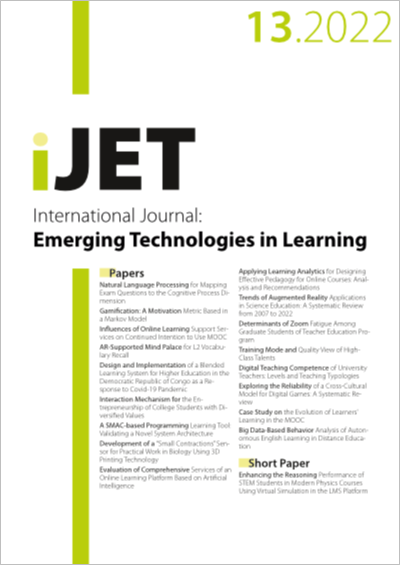Trends of Augmented Reality Applications in Science Education
A Systematic Review from 2007 to 2022
DOI:
https://doi.org/10.3991/ijet.v17i13.30587Keywords:
augmented reality, science education, systematic analysis, literature review, research trendsAbstract
The current study was intended to conduct a systematic literature review in the field of augmented reality (AR) in science education. In this review, we considered 319 refereed articles from the Scopus database over the last 15 years (2007-2022). For this review, trends of AR applications in science education were proposed from various aspects, such as annual scientific growth, the number of authors, most active countries, most prolific journals, most cited articles, and most preferred research methods. The results indicated that: (1) research on AR applications has steadily increased since 2007 and peaked in 2020 and 2021; (2) the majority of publications have two authors followed by three authors and four authors; (3) the countries of the first authors of the AR studies were mostly from the US followed by Taiwan and Turkey; (4) the majority of articles were published by the Journal of Chemical Education and Computers and Education with 19 and 11 papers, respectively; (5) the most cited papers were written by Dunleavy, Dede, and Mitchell (638 citations), Potkonjak and colleagues (339 citations), and Squire and Jan (300 citations); and (6) more than one-third of the documents employed quantitative methods followed by mixed and qualitative methods. Based on the findings, discussion and suggestions are presented for future studies.
Downloads
Published
How to Cite
Issue
Section
License
Copyright (c) 2022 Irwanto Irwanto, Roswina Dianawati, Isna Rezkia Lukman

This work is licensed under a Creative Commons Attribution 4.0 International License.



